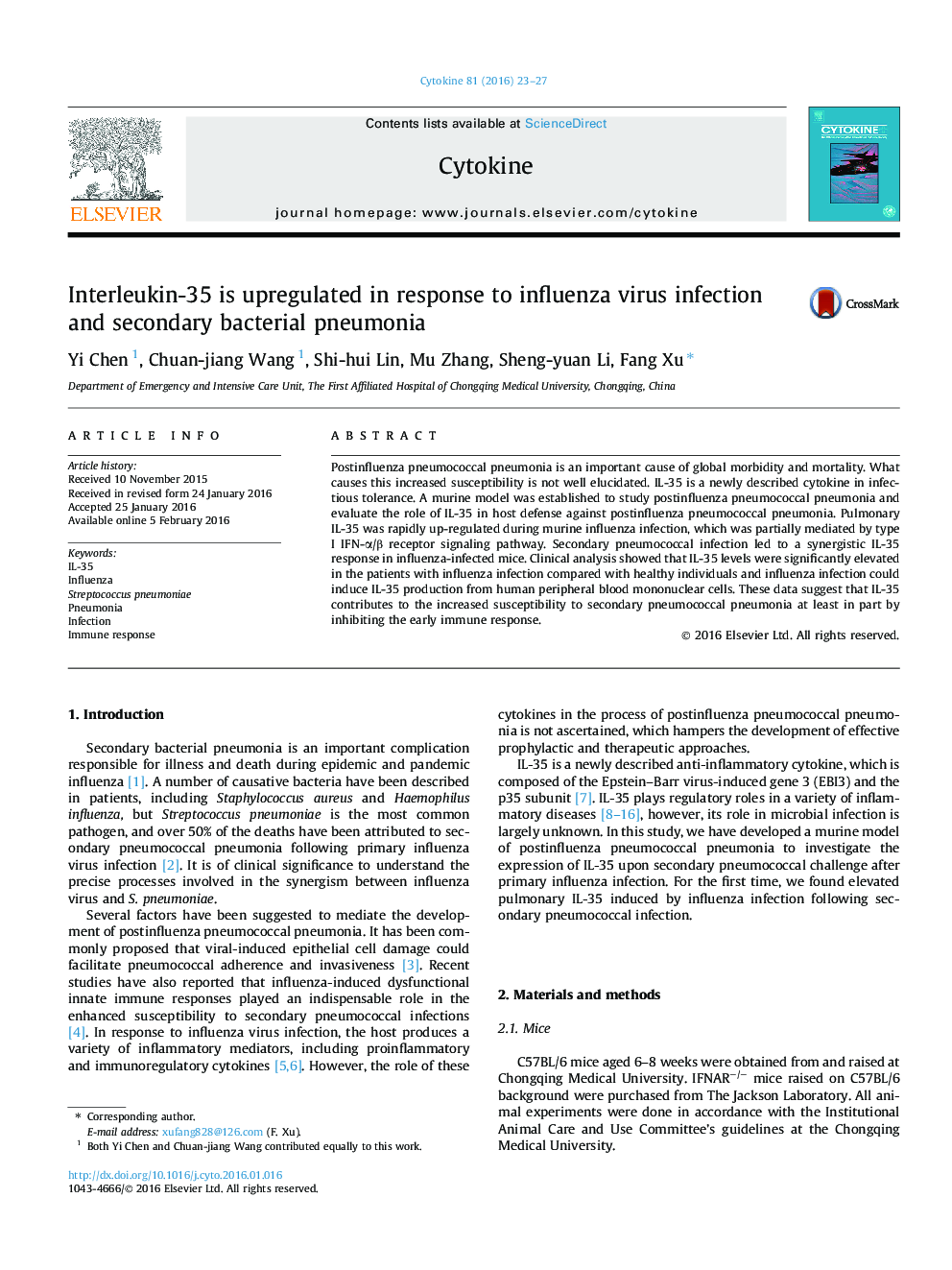| Article ID | Journal | Published Year | Pages | File Type |
|---|---|---|---|---|
| 5896747 | Cytokine | 2016 | 5 Pages |
â¢We developed a murine model of postinfluenza pneumococcal pneumonia.â¢We collected Serum sample from 30 healthy individuals and 33 patients.â¢We found elevated pulmonary IL-35 induced by influenza infection following secondary pneumococcal infection.
Postinfluenza pneumococcal pneumonia is an important cause of global morbidity and mortality. What causes this increased susceptibility is not well elucidated. IL-35 is a newly described cytokine in infectious tolerance. A murine model was established to study postinfluenza pneumococcal pneumonia and evaluate the role of IL-35 in host defense against postinfluenza pneumococcal pneumonia. Pulmonary IL-35 was rapidly up-regulated during murine influenza infection, which was partially mediated by type I IFN-α/β receptor signaling pathway. Secondary pneumococcal infection led to a synergistic IL-35 response in influenza-infected mice. Clinical analysis showed that IL-35 levels were significantly elevated in the patients with influenza infection compared with healthy individuals and influenza infection could induce IL-35 production from human peripheral blood mononuclear cells. These data suggest that IL-35 contributes to the increased susceptibility to secondary pneumococcal pneumonia at least in part by inhibiting the early immune response.
